50 Amazing Fact About The Moon
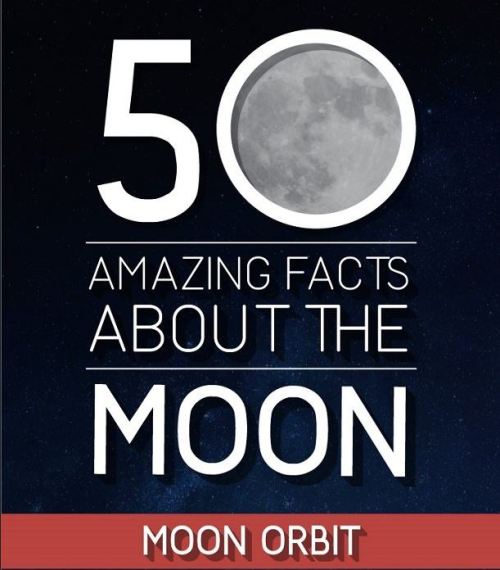
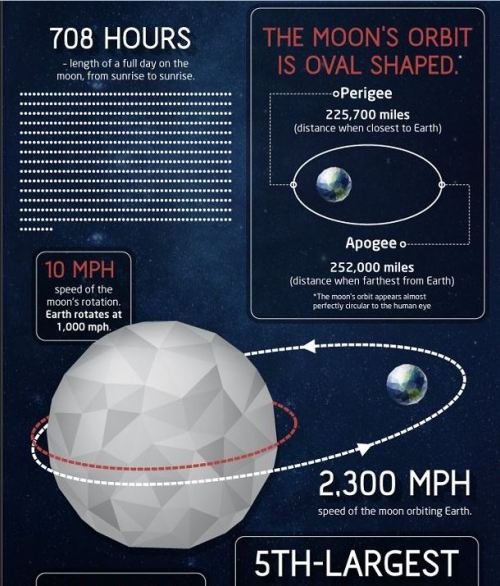
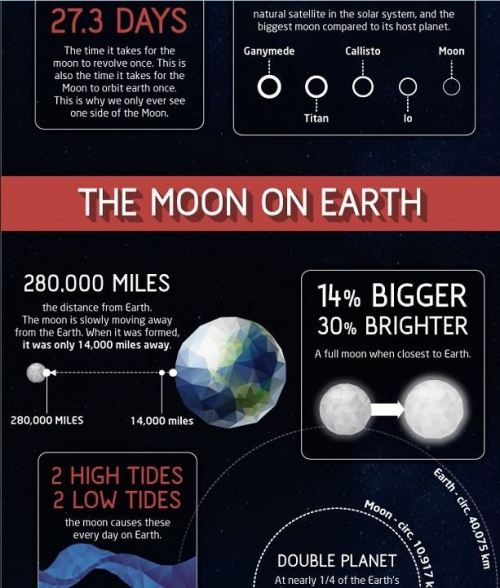
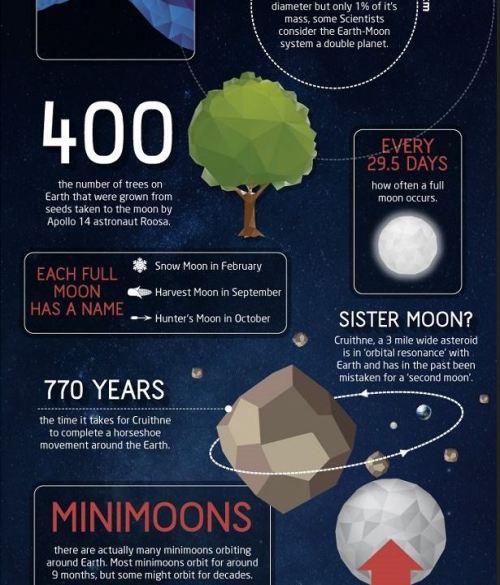
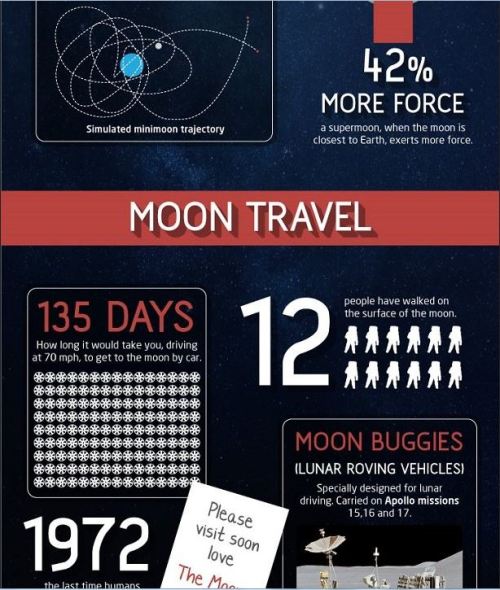
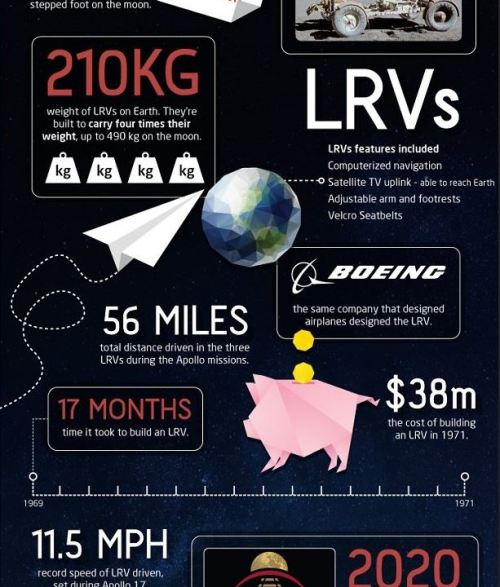
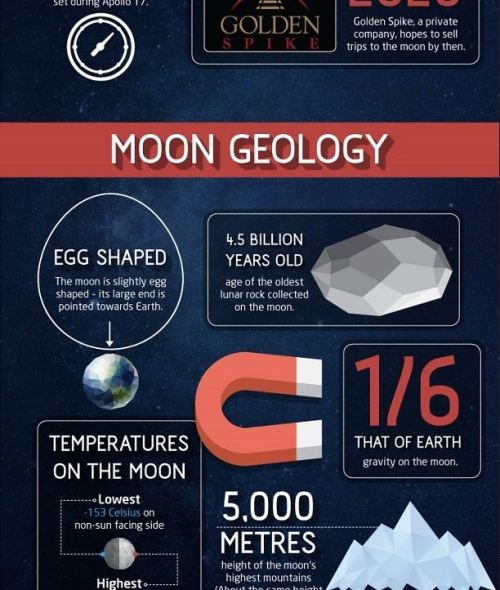
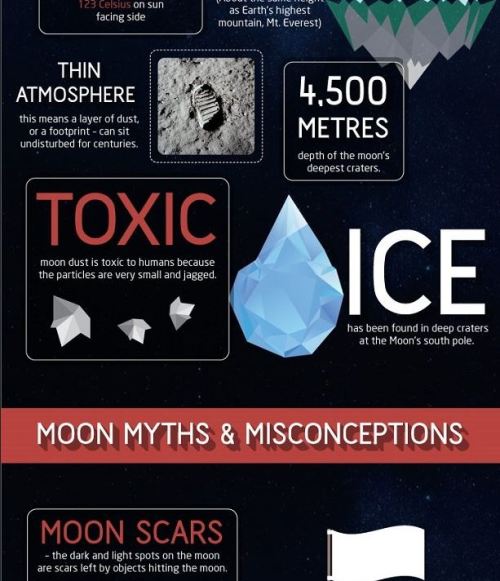
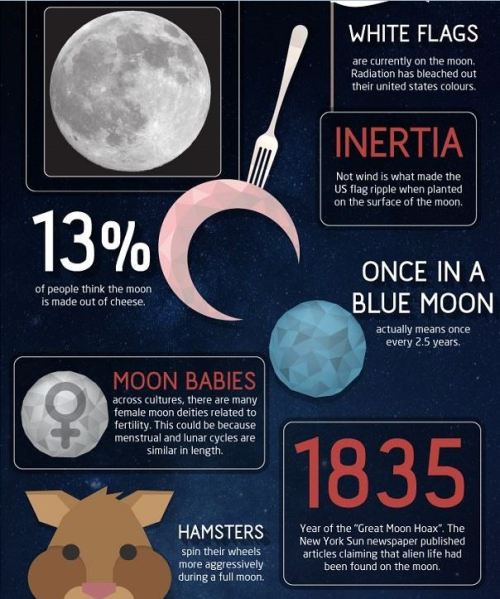
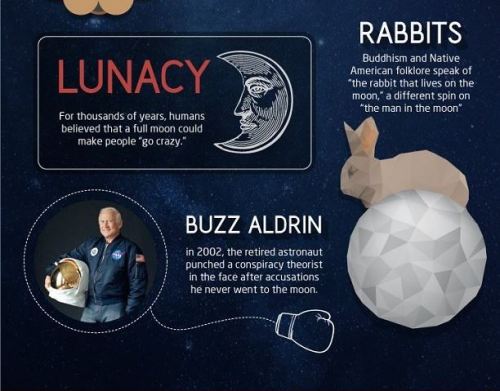
50 Amazing Fact About the Moon
(Source)
More Posts from Smartler and Others
“Adding colour to water… in zero g” [x]




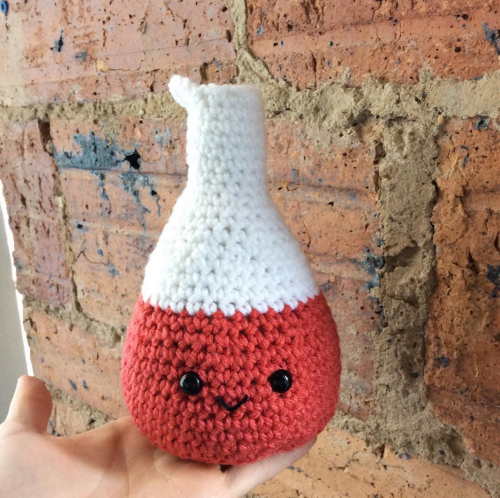



Textile Art + Science = Crocheted Chemistry
Dallas, TX-based textile artist Lauren Espy just completed crocheting the cutest chemistry set we’ve ever seen. Each handmade piece of amigurumi lab equipment, colorful beakers and test tubes, and a fiery little bunsen burner (our favorite), wears a smiling face that clearly says they’re ready to do some awesome science.
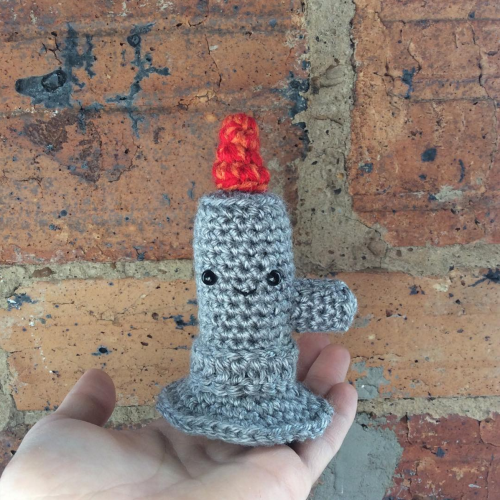
Follow Lauren Espy on Instagram to check out more of her crocheted creations. Espy sells some of her pieces via her Etsy shop, where she plans to list smaller pieces of crocheted chemistry equipment in the near future. So stay tuned!
[via A Menagerie of Stitches]
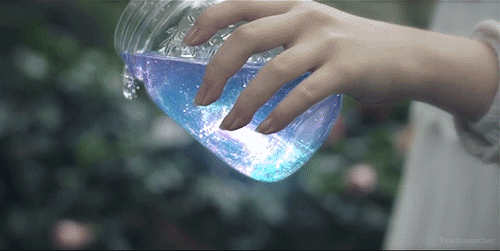
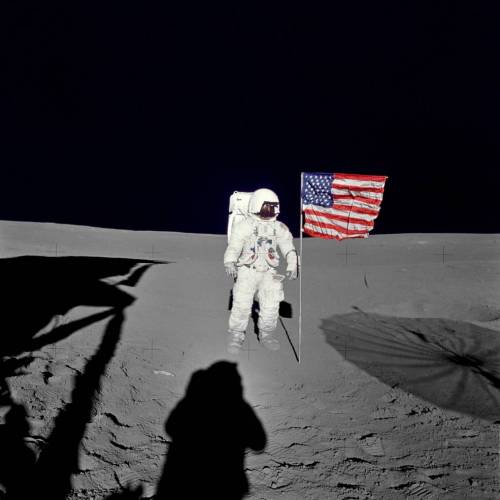

Apollo Astronaut Edgar Mitchell Dies at Age 85
Astronaut Edgar Mitchell, lunar module pilot on Apollo 14, passed away Thursday in West Palm Beach, Fla., on the eve of the 45th anniversary of his lunar landing. Mitchell was the sixth man to walk on the Moon.
“To me, that (spaceflight) was the culmination of my being, and what can I learn from this? What is it we are learning? That’s important, because I think what we’re trying to do is discover ourselves and our place in the cosmos, and we don’t know. We’re still looking for that.” - Edgar Mitchell in 1997 interview for NASA’s oral history program.
Source: NASA
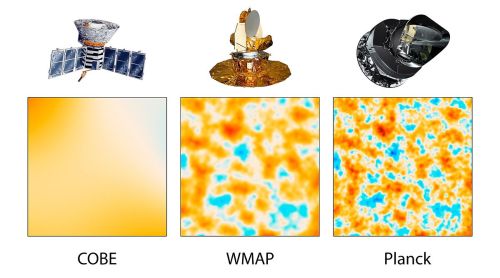
See what technology was used in determining the age of the #Universe
http://astronomyisawesome.com/universe/the-age-of-the-universe/
SCIENCE WARS – Acapella Parody (VIDEO)
Which field of science is the strongest? Physics, Chemistry, Biology or Math?
We have the disciplines battle it out in our new Star Wars inspired, acapella song.

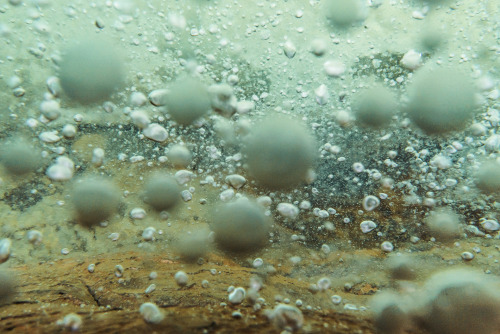

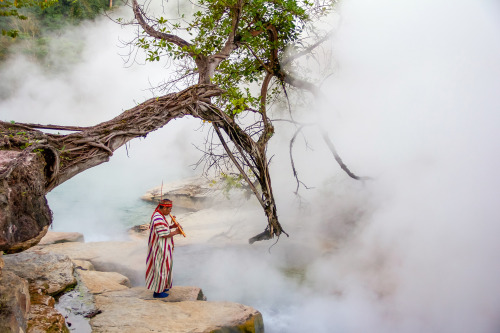

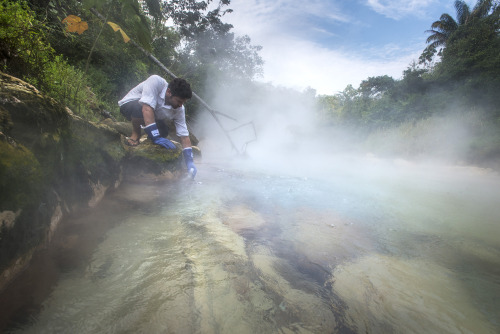
Geologist Andrés Ruzo first heard about the boiling river as child, but it was always thought of as mythical. It was considered “a place of spirits.” But when Ruzo’s aunt insisted a boiling river existed in Peru, he set out to find it. Now, Ruzo is the first scientist to be given the blessing of the local shaman to study the boiling river. Ruzo talks about the mysterious nature of the boiling river on the latest episode of the TED Radio Hour.
What Are the Bright Spots on Ceres?

Dwarf planet Ceres has more than 130 bright areas, and most of them are associated with impact craters. Now, Ceres has revealed some of its well-kept secrets in two new studies in the journal Nature, thanks to data from our Dawn spacecraft.
Two studies have been looking into the mystery behind these bright areas. One study identifies this bright material as a kind of salt, while the other study suggests the detection of ammonia-rich clays.
Study authors write that the bright material is consistent with a type of magnesium sulfate called hexahydrite. A different type of magnesium sulfate is familiar on Earth as Epsom salt.

Researchers, using images from Dawn’s framing camera, suggest that these salt-rich areas were left behind when water-ice sublimated in the past. Impacts from asteroids would have unearthed the mixture of ice and salt.
An image of Occator Crater (below) shows the brightest material on Ceres. Occator itself is 60 miles in diameter, and its central pit, covered by this bright material, measures about 6 miles wide. With its sharp rim and walls, it appears to be among the youngest features on the dwarf planet.

In the second nature study, members of the Dawn science team examined the composition of Ceres and found evidence for ammonia-rich clays. Why is this important?
Well, ammonia ice by itself would evaporate on Ceres today, because it is too warm. However, ammonia molecules could be stable if present in combination with other minerals. This raises the possibility that Ceres did not originate in the main asteroid belt between Mars and Jupiter, where it currently resides. But instead, might have formed in the outer solar system! Another idea is that Ceres formed close to its present position, incorporating materials that drifted in from the outer solar system, near the orbit of Neptune, where nitrogen ices are thermally stable.

As of this week, our Dawn spacecraft has reached its final orbital altitude at Ceres (about 240 miles from the surface). In mid-December, it will begin taking observations from this orbit, so be sure to check back for details!
ake sure to follow us on Tumblr for your regular dose of space: http://nasa.tumblr.com
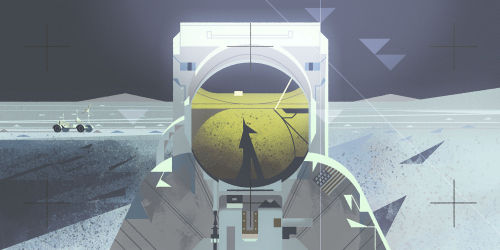
About your previous post, space-paintings sound awesome
You’re awesome

-
 constantlytwistedhazard liked this · 1 month ago
constantlytwistedhazard liked this · 1 month ago -
 alejandrotadeo3 reblogged this · 3 months ago
alejandrotadeo3 reblogged this · 3 months ago -
 brendatweakz liked this · 3 months ago
brendatweakz liked this · 3 months ago -
 a-sir-a-daddy-a-lover liked this · 3 months ago
a-sir-a-daddy-a-lover liked this · 3 months ago -
 erdbeerbluete liked this · 5 months ago
erdbeerbluete liked this · 5 months ago -
 don-cap liked this · 5 months ago
don-cap liked this · 5 months ago -
 ownedpainslutslave liked this · 6 months ago
ownedpainslutslave liked this · 6 months ago -
 11btw liked this · 6 months ago
11btw liked this · 6 months ago -
 prof-flytrap liked this · 6 months ago
prof-flytrap liked this · 6 months ago -
 jahbasedgod reblogged this · 6 months ago
jahbasedgod reblogged this · 6 months ago -
 big-genie liked this · 7 months ago
big-genie liked this · 7 months ago -
 curliertangent reblogged this · 9 months ago
curliertangent reblogged this · 9 months ago -
 notterminatedyet reblogged this · 10 months ago
notterminatedyet reblogged this · 10 months ago -
 elrondtheelf liked this · 10 months ago
elrondtheelf liked this · 10 months ago -
 black-jack liked this · 1 year ago
black-jack liked this · 1 year ago -
 elyxir liked this · 1 year ago
elyxir liked this · 1 year ago -
 cybertheolibnut1 liked this · 1 year ago
cybertheolibnut1 liked this · 1 year ago -
 clonkwing reblogged this · 1 year ago
clonkwing reblogged this · 1 year ago -
 zorisama liked this · 1 year ago
zorisama liked this · 1 year ago -
 redtruck liked this · 1 year ago
redtruck liked this · 1 year ago -
 babyhumanpalacelover liked this · 1 year ago
babyhumanpalacelover liked this · 1 year ago -
 brickhouse48 liked this · 1 year ago
brickhouse48 liked this · 1 year ago -
 wyanton liked this · 1 year ago
wyanton liked this · 1 year ago -
 scdownunder2 liked this · 2 years ago
scdownunder2 liked this · 2 years ago -
 tgl4mea liked this · 2 years ago
tgl4mea liked this · 2 years ago -
 mediocurehuman212 reblogged this · 2 years ago
mediocurehuman212 reblogged this · 2 years ago -
 mediocurehuman212 liked this · 2 years ago
mediocurehuman212 liked this · 2 years ago